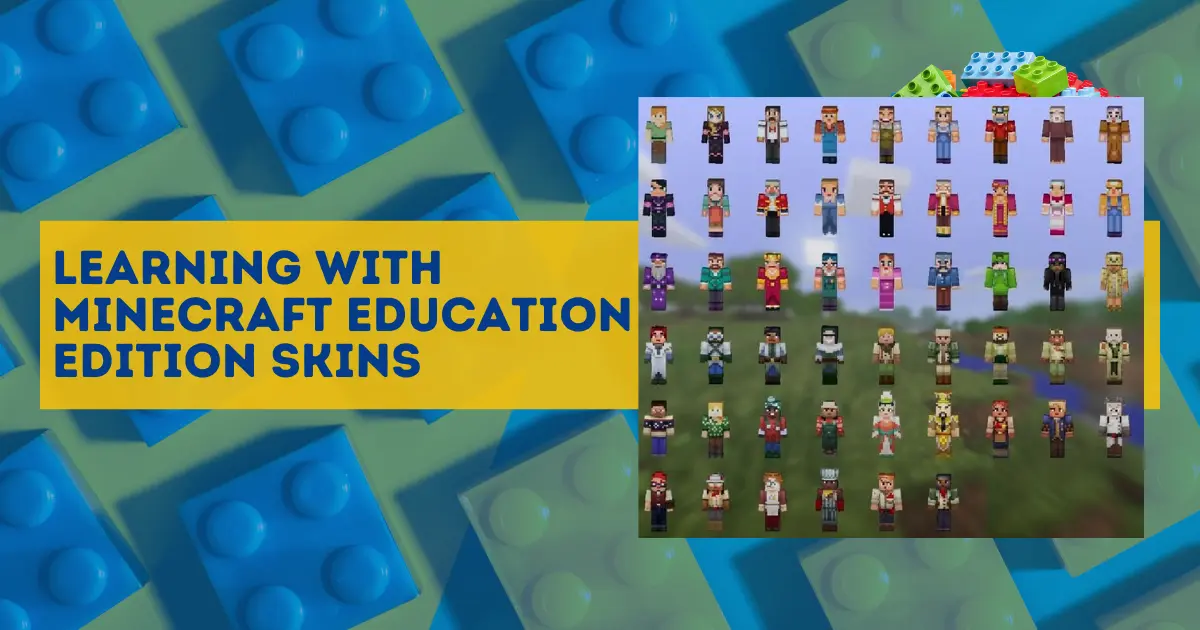Introduction
Minecraft Education Edition has revolutionized conventional education by offering a dynamic and interactive learning platform. One of the key features that sets it apart is the ability for players to customize their avatars with skins. These skins are not just cosmetic; they play a significant role in enhancing the learning experience. This article explores the various ways in which Minecraft Education Edition skins. Can be used to promote engagement. creativity, and learning in the classroom.
Personalization and Identity
Skins in Minecraft Education Edition allow students to personalize their avatars, creating a sense of ownership and identity. Within the game. This customization goes beyond just choosing a skin; it involves students actively engaging in the creation or selection process. Which can be a creative and reflective exercise. For example, students could be tasked with creating a skin representing an aspect of themselves or their interests. This personalization can lead to a stronger emotional connection to the game and the learning experience.
Historical and Cultural Exploration
Teachers can use skins to immerse students in different historical periods or cultures. By providing historically accurate skins or skins. That represent different cultures, teachers can create a more authentic and immersive learning experience. For example, students could explore ancient civilizations by using skins that depict historical figures or clothing from that time period. This hands-on approach to history can make learning more engaging and memorable. As students are actively experiencing and interacting with the content.
Character Role-Play
Skins can be used to enhance character role-play in Minecraft Education Edition. By choosing skins that represent characters from literature, historical figures, or even fictional characters. Students can act out scenes and scenarios from books or historical events. This role-playing not only helps students understand the characters and their motivations better but also. Allows them to explore different perspectives and viewpoints. For example, students could reenact a famous historical debate using skins that represent the key figures involved. Gaining a deeper understanding of the arguments and the context in which they were made.
Team Building and Collaboration
Matching skins can be used to visually represent teams or groups within the game, promoting a sense of camaraderie and teamwork among students. By assigning unique skins to different teams, teachers can create a visual distinction that helps students identify and bond with their team members. This visual cue can be particularly useful in collaborative projects or challenges, where teams are required to work together towards a common goal. For example, students could be tasked with building a collaborative structure in the game, with each team member contributing their unique skills and abilities, represented by their avatar’s skin.
Reward and Recognition
Skins can also be used as rewards for achievements or milestones in the game. By offering unique or rare skins as rewards, teachers can incentivize students to actively participate and excel in their learning. This gamification element can make learning more engaging and motivate students to push themselves further. For example, students could earn a special skin for completing a challenging task or mastering a difficult concept, providing a tangible and meaningful reward for their efforts.
Inclusivity and Representation
Skins in Minecraft Education Edition can promote inclusivity and representation by allowing students to choose avatars that reflect themselves or their cultural backgrounds. This can create a more inclusive and welcoming environment for all students, regardless of their background or identity. For example, students from diverse cultural backgrounds could choose skins that represent their heritage, allowing them to feel more represented and included in the game. This sense of representation can have a positive impact on students’ self-esteem and sense of belonging, ultimately enhancing their overall learning experience.
Creativity and Expression:
- Showcase examples of unique and creative skins designed by students, highlighting the diversity of artistic styles and themes.
- Discuss how the customization of skins can encourage students to think outside the box and experiment with different design elements.
Cross-Curricular Connections:
- Provide specific examples of how skins can be used in different subjects, such as creating historical figures for history lessons or representing elements of the periodic table for chemistry.
- Interview teachers who have successfully integrated skins into their curriculum to share their insights and experiences.
Problem-Solving and Critical Thinking:
- Describe scenarios or challenges that require students to use skins creatively to solve a problem, such as designing a skin for a character in a story to reflect their personality traits.
- Discuss how teachers can use skins to assess students’ problem-solving skills and provide feedback on their creative choices.
Assessment and Feedback:
- Explain different ways in which skins can be used as a form of assessment, such as asking students to create a skin that represents a concept they have learned in class.
- Provide tips for teachers on how to provide constructive feedback on students’ skin designs, focusing on both artistic merit and relevance to the learning objectives.
Community Building:
- Share stories of how skins have helped foster a sense of community among students, such as creating a class-wide theme for skins that promotes unity and teamwork.
- Discuss the role of teachers in facilitating positive interactions among students through the use of skins, such as organizing skin design contests or collaborative projects.
Digital Citizenship:
- Outline best practices for using skins responsibly, such as respecting intellectual property rights and avoiding offensive or inappropriate designs.
- Provide resources and tools for teachers to educate students about digital citizenship in the context of skin customization and online interactions.
These content ideas can help you create a comprehensive and engaging article that explores the various ways in which skins can enhance the learning experience in Minecraft Education Edition.
Conclusion
In conclusion, Minecraft Education Edition skins are powerful tools that can enhance the learning experience in a variety of ways. By leveraging the creative potential of skins, educators can create immersive and engaging learning environments. That cater to diverse student needs and interests. Whether used for personalization, historical exploration, character role-play, team building, rewards, or inclusivity skins in Minecraft Education Edition. Have the potential to transform traditional education and make learning more interactive, meaningful, and fun.



